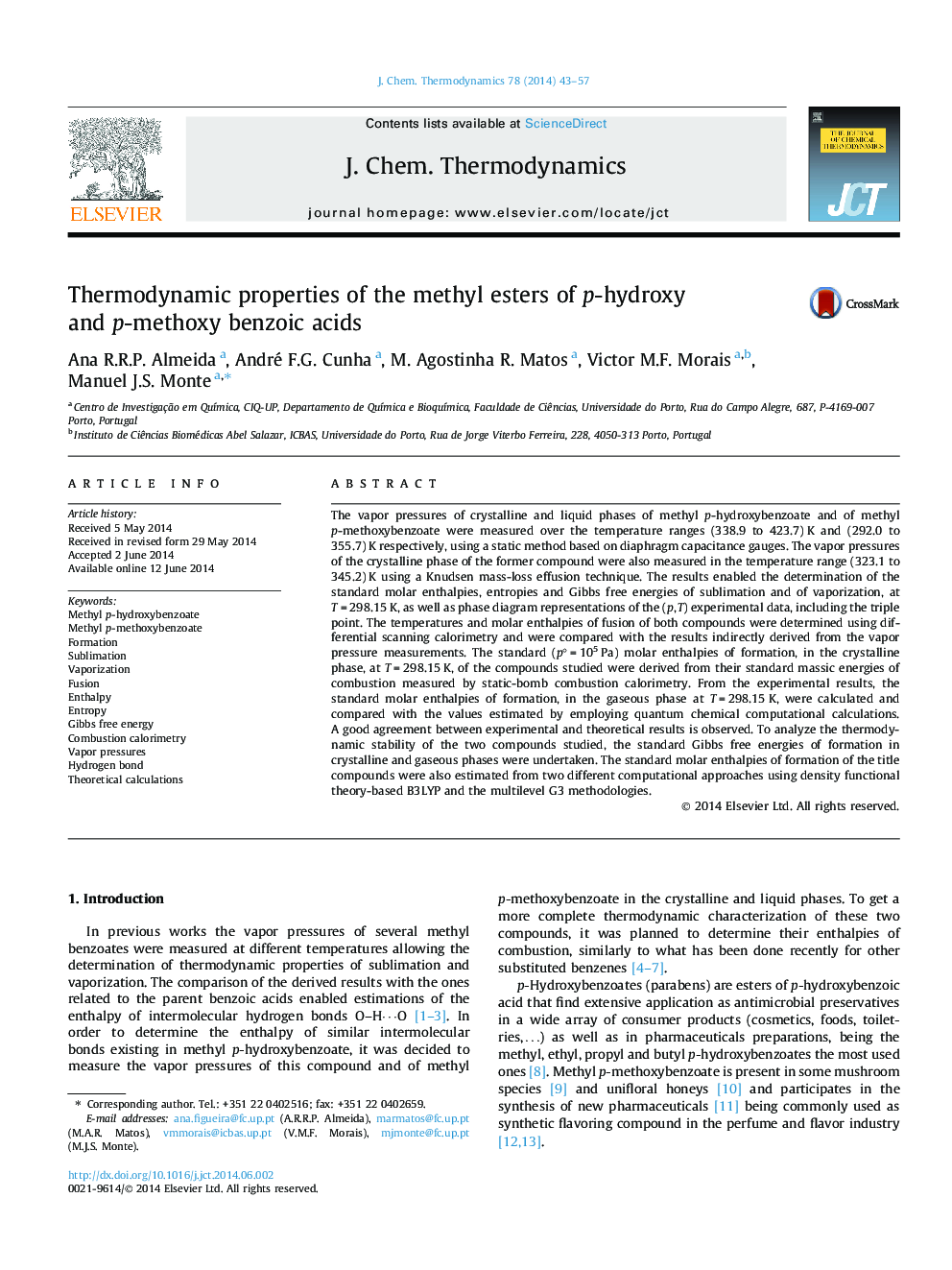| کد مقاله | کد نشریه | سال انتشار | مقاله انگلیسی | نسخه تمام متن |
|---|---|---|---|---|
| 215359 | 1426235 | 2014 | 15 صفحه PDF | دانلود رایگان |

• Vapor pressures and energies of combustion of two methyl benzoates were measured.
• Standard molar ΔH, ΔS and ΔG of sublimation and vaporization were derived.
• Standard molar ΔH, ΔS and ΔG of formation in crystal and gas phases were calculated.
• Gas phase ΔH of formation was also estimated by quantum chemical calculations.
• ΔH of the intermolecular hydrogen bond O–H⋯O was estimated.
The vapor pressures of crystalline and liquid phases of methyl p-hydroxybenzoate and of methyl p-methoxybenzoate were measured over the temperature ranges (338.9 to 423.7) K and (292.0 to 355.7) K respectively, using a static method based on diaphragm capacitance gauges. The vapor pressures of the crystalline phase of the former compound were also measured in the temperature range (323.1 to 345.2) K using a Knudsen mass-loss effusion technique. The results enabled the determination of the standard molar enthalpies, entropies and Gibbs free energies of sublimation and of vaporization, at T = 298.15 K, as well as phase diagram representations of the (p, T) experimental data, including the triple point. The temperatures and molar enthalpies of fusion of both compounds were determined using differential scanning calorimetry and were compared with the results indirectly derived from the vapor pressure measurements. The standard (p° = 105 Pa) molar enthalpies of formation, in the crystalline phase, at T = 298.15 K, of the compounds studied were derived from their standard massic energies of combustion measured by static-bomb combustion calorimetry. From the experimental results, the standard molar enthalpies of formation, in the gaseous phase at T = 298.15 K, were calculated and compared with the values estimated by employing quantum chemical computational calculations. A good agreement between experimental and theoretical results is observed. To analyze the thermodynamic stability of the two compounds studied, the standard Gibbs free energies of formation in crystalline and gaseous phases were undertaken. The standard molar enthalpies of formation of the title compounds were also estimated from two different computational approaches using density functional theory-based B3LYP and the multilevel G3 methodologies.
Figure optionsDownload as PowerPoint slide
Journal: The Journal of Chemical Thermodynamics - Volume 78, November 2014, Pages 43–57